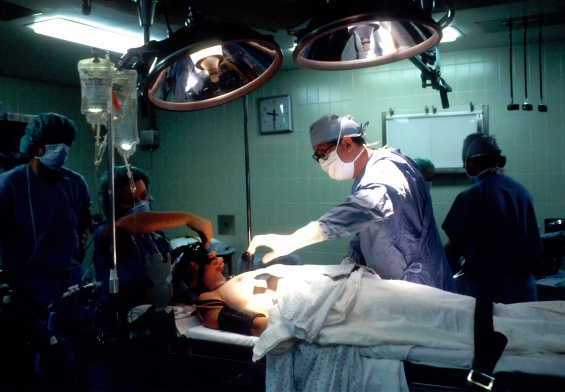A root canal is a common dental procedure that treats infection or damage within the tooth’s pulp—the innermost layer, where the nerves and blood vessels are. For many, hearing the term “root canal” can cause fear or anxiety because of misconceptions about pain and complexity. However, an understanding of what a root canal really involves can alleviate these concerns and demonstrate how important they are in preserving dental health.
What is a Root Canal?
A root canal is a dental procedure performed to save a tooth that has been severely damaged or infected. The tooth’s pulp, which can become inflamed due to deep decay, repeated dental procedures, or trauma, is removed during the procedure. The primary goal of a root canal is to get rid of the infection and protect the affected tooth from more infections, in order to avoid losing the tooth.
The tooth pulp plays a huge role while a tooth is growing, but once a tooth is fully matured, it can function without its pulp. When the pulp becomes infected, it can lead to intense pain, abscesses, and eventually, complete loss of the tooth if it’s left untreated. A root canal removes the infected tissue, disinfects the inside of the tooth, and seals it to prevent further damage.
The Step-by-Step Process of a Root Canal
The root canal procedure usually involves several steps, which may take place over one to three visits depending on how complex or severe the case is.
-
Preparation:
Before the procedure, your dentist or endodontist will perform a thorough examination, often including X-rays, to determine the infection’s extent and plan the treatment. Local anesthesia is administered to numb the area around the affected tooth, making sure you experience no pain during the procedure. A dental dam, a small rubber sheet, is then placed around the tooth to keep it dry and isolated so the dentist can work on it.
-
Accessing the Pulp:
The dentist begins by drilling a small hole through the top of the tooth to access the pulp chamber and root canals. Through this opening, the dentist will be able to reach the infected or damaged pulp tissue.
-
Removing the Infected Pulp:
Using special instruments, the dentist carefully removes the infected pulp from the pulp chamber and root canals. The canals are then cleaned and shaped to remove any remaining debris and get them ready for filling. Disinfection is an incredibly important step, where medicated irrigation solutions are often used to get rid of bacteria and prevent further infection.
-
Filling and Sealing the Canals:
Once the canals are clean and shaped, they are filled with a biocompatible material, typically one called gutta-percha. It’s a rubber-like material that’s inserted into the canals and sealed with an adhesive cement to make sure the seal is tight. This step plays a huge role in preventing bacteria from getting back into the tooth.
-
Tooth Restoration:
After the root canal treatment, the tooth is temporarily sealed with a filling. In most cases, a permanent restoration, like a crown, is required to protect the tooth from breaking and restore its full function. The crown is custom-made to fit over the tooth and provides the necessary strength to withstand activities like chewing.
Benefits and Risks of Root Canal Treatment
Benefits
One of the main benefits of a root canal is that it allows you to save your natural tooth, which is always better than needing it extracted. Preserving your natural teeth makes sure you can still chew and bite properly, maintains your natural smile, and prevents other teeth from shifting out of alignment. Additionally, root canals are one of the most common dental procedures, with about 15 million performed in the US every year. They wouldn’t be performed so much if they didn’t have a high success rate, with many treated teeth lasting a lifetime when they’re properly cared for.
Another significant advantage is the relief from pain. A root canal removes the source of infection and inflammation, which can otherwise cause severe discomfort. Despite common misconceptions, the procedure itself is not painful; modern techniques and anesthesia make it comparable to getting a routine filling.
Risks
While root canals are generally safe, there are some risks associated with the procedure. In rare cases, the infection may stick around if not all the bacteria are removed, which makes retreatment necessary. Additionally, a tooth with a root canal procedure performed on it becomes more fragile and prone to fractures as a result, especially if it’s not properly restored with a crown. This is why getting a dental crown after a root canal is highly recommended.
Aftercare and Recovery
Proper aftercare is necessary to make sure your root canal treatment is successful and keep the restored tooth healthy. It’s common to experience some sensitivity or mild discomfort right after the procedure, which can usually be managed with over-the-counter pain medications like ibuprofen.
During the recovery period, avoid chewing with the treated tooth until it’s been fully restored with a crown. Stick to a diet of soft foods and avoid anything hard or sticky, since they could damage the temporary filling. Good oral hygiene practices, like brushing with fluoride toothpaste and flossing daily, are important in keeping your teeth and gums healthy. Regular dental check-ups will also help monitor the health of the treated tooth and catch any potential issues early.
Most people recover from a root canal within a few days, but it’s important to follow your dentist’s aftercare instructions closely to make sure you’re healing properly. If you experience severe pain, swelling, or any signs of infection after the procedure, contact your dentist immediately.
Leveraging Your Understanding of a Root Canal
A root canal is a valuable dental procedure that can save a tooth that might otherwise be lost due to severe decay or infection. While many may be intimidated by the thought of a root canal, an understanding of the process and the benefits can help alleviate concerns. With modern techniques and proper aftercare, a root canal is a safe and effective way to maintain your dental health, so you can keep your natural teeth and avoid more extensive dental work in the future.
By following your dentist’s advice and maintaining good oral hygiene, you can enjoy the long-term benefits of a healthy, pain-free smile. If you think you might need a root canal or have questions about the procedure, contact your dentist—they’re there to help you every step of the way.




